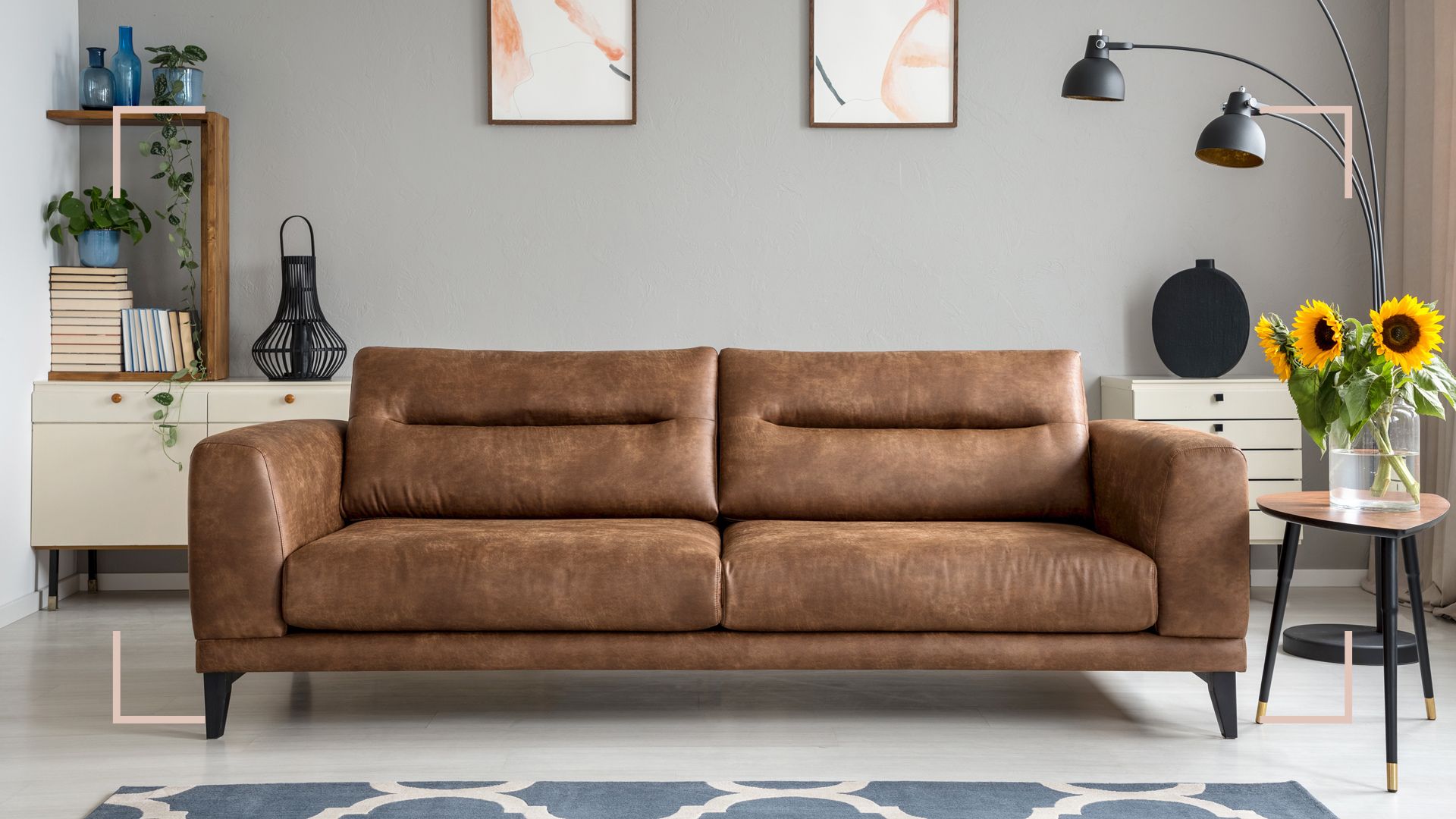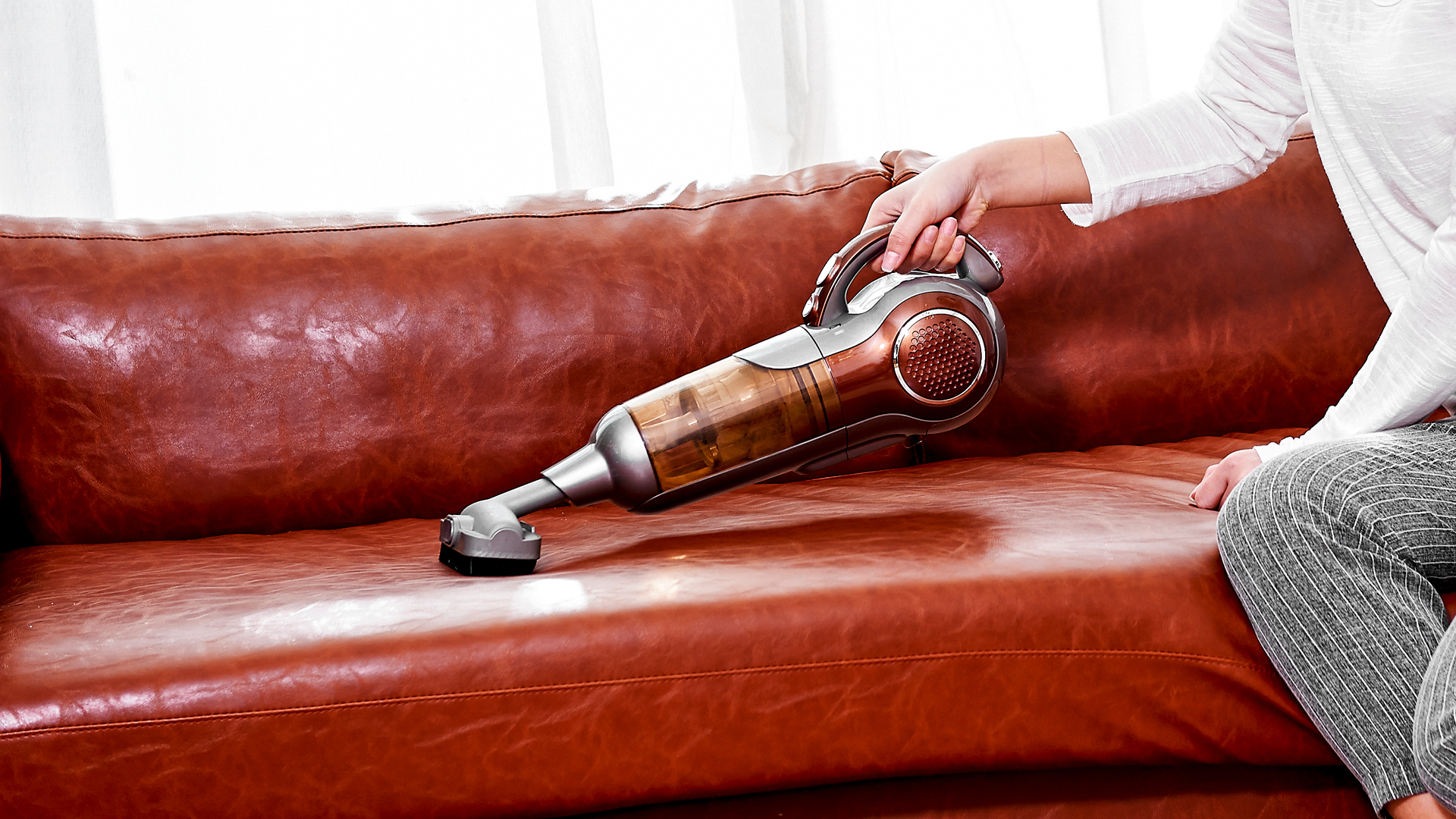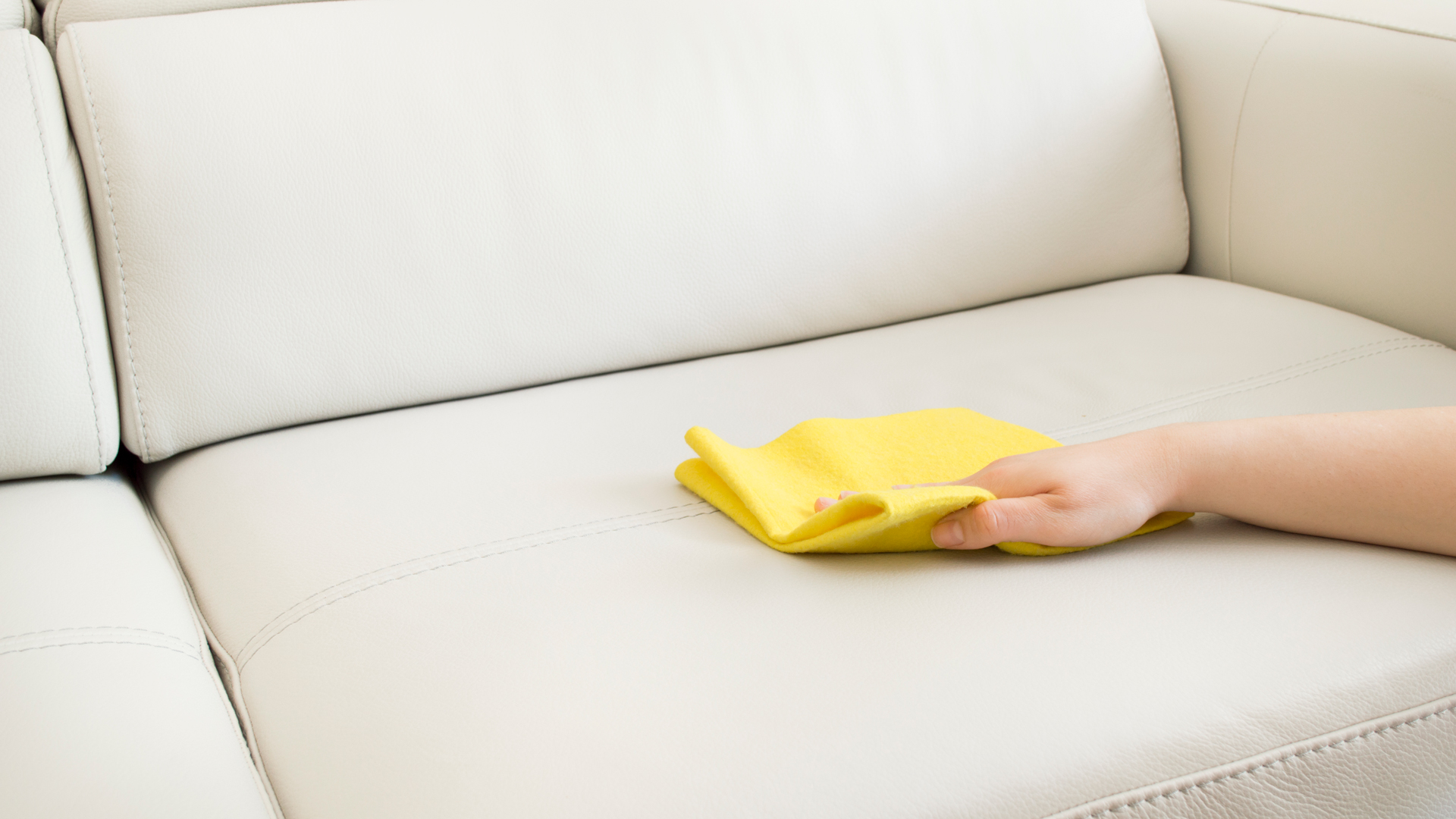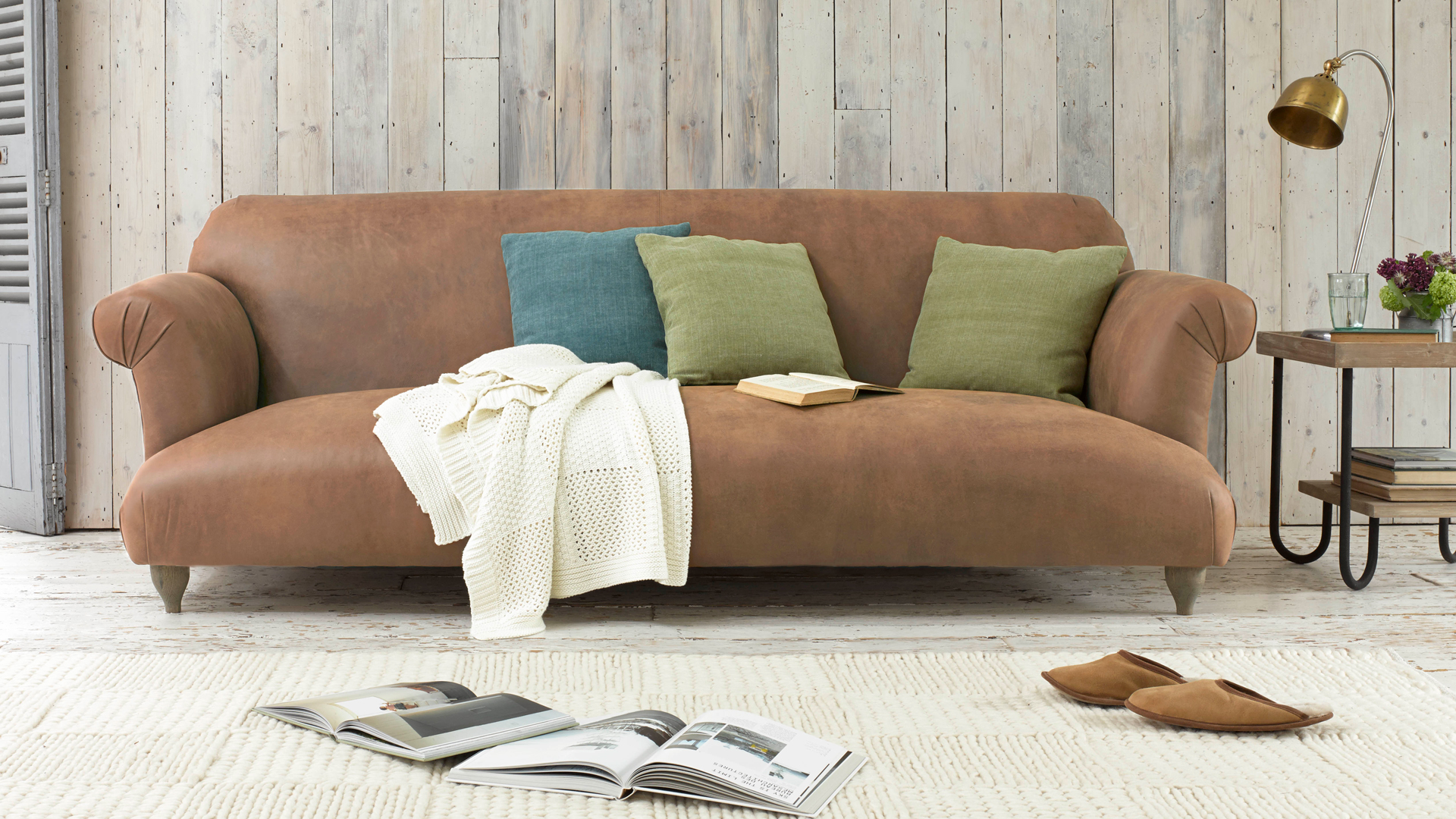An expert 6-step guide on how to clean a leather sofa
This simple step-by-step guide on how to clean a leather sofa has been approved by experts to help you clean your sofa properly without damaging the sensitive material


Knowing how to clean a leather sofa properly is important because they are more susceptible to potential damage than other upholstery and some traditional cleaning methods can cause further stains or watermarks.
Leather sofas are a great choice for many reasons; they’re stylish, timeless, durable, and best of all, they’re relatively easy to clean – when you know how. As an expensive investment piece for your home, the last thing you want to do is damage your sofa when cleaning it. Just as you would when cleaning stainless steel or cleaning marble, cleaning leather requires extra care and attention - and there are dos and don'ts for a better clean.
Our expert guide to how to clean a leather sofa covers all the key cleaning methods to keep your leather sofa in good condition and to prolong the life of your sofa.
How to clean a leather sofa: an expert step-by-step
“There are ample options when it comes to cleaning your leather couch correctly; it’s important to use products specifically designed for treating leather,” says Chad Bodinnar, Sales Manager, at ScS.
“Water-based products are particularly useful for treating most stains by penetrating the surface to clean without harming your leather. Ensure that any liquid that is used to clean the surface is wiped dry with a microfibre cloth and that, once cleaning is complete, you apply a leather protection cream to condition it. This will provide you with a protective layer to help repel stains and soiling whilst working to keep the leather soft and comfortable."
Follow our simple step-by-step guide to refresh your leather couch.
What you’ll need:
Sign up for the woman&home newsletter
Sign up to our free daily email for the latest royal and entertainment news, interesting opinion, expert advice on styling and beauty trends, and no-nonsense guides to the health and wellness questions you want answered.
- A vacuum cleaner
- Two or more microfibre cloths
- Saddle soap/white vinegar/gentle soap
- Leather cream
1. Vacuum or wipe away dust and dirt

Similar to cleaning hardwood floors, the first step to cleaning your leather sofa is to physically remove any dust, dirt, or grime from the surface of your couch. "This will avoid it from being inadvertently rubbed into the sofa when you’re wiping it down with the cleaning solution," explains Rebecca Snowden, Interior Style Advisor at Furniture And Choice.
Use the best vacuum you have for the job and go over your entire sofa, including the back, arms and underneath the cushions to completely remove all traces of dirt. If the cushions are removable then take them off to capture any hidden dirt.
"A good option here is to use the soft brush attachment on the vacuum cleaner to avoid scratches. But if you don’t have a suitable vacuum cleaner, a dry microfibre cloth would also do the trick - and is important for Step 3 too!"
2. Prepare a cleaning solution
When it comes to choosing the right soap or cleaner for your leather sofa, it's a case of the gentler, the better. "A few options work well here, and most are household items readily available in your bathroom or pantry," says Rebecca. "A mild PH-balanced soap is the very best choice for cleaning leather – either in bar form or by mixing a few drops into some warm water for a very diluted mixture."
"For a natural approach, a simple dilution of 50:50 white vinegar and water can do the trick. This is an effective, yet gentle stain remover for most types of upholstery and leather is no exception. Lastly, saddle soaps, or soaps specifically made for leather, are an option, but they also run the risk of darkening or hardening the surface of your sofa."
3. Carry out a patch test
Once your solution is ready it is advisable to test it on a small section of the leather first, before liberally applying. "Whichever cleaning solution you choose, try using it on a small section of the sofa first, " Rebecca advises. "Preferably somewhere that isn’t highly visible."
"Apply a small amount, and let it dry out to ensure that it looks the way you want it to and there isn’t discoloration."
4. Clean the sofa with a microfibre cloth

Once you're happy with the results of the patch test it's time to start the cleaning process. "You’ll need two soft microfibre cloths, one for cleaning the sofa and one for drying it," advises Rebecca. "First, dip one cloth into the cleaning liquid and wring it out – it should be damp, and not dripping wet. If you’re using bar soap, dampen the cloth and swipe it across the surface of the soap."
"Now, working from top to bottom, rub the cloth gently but firmly along the surface, taking care to go into the corners. Continue to rinse the cloth in the cleaning solution as and when you need it." Master to to clean your microfibre cloth to make sure it's up to the job.
"To avoid water marks after cleaning we advise that you dampen a colorfast cloth with boiled water from a kettle and gently wipe the entire panel or cushion from seam to seam,"advises Giselle Lancaster, Buying Manager at Sofology. "This will help to prevent any water stains as the fabric dries."
5. Buff the surface dry
After washing the sofa with your solution, the next step is to buff the leather surface dry, to ensure there's no excess moisture left – taking extra care to tackle seams and cushion recesses.
"There’s no need to rinse the solution out, but it’s crucial to thoroughly dry the sofa to ensure there’s no risk of mildew or mold," explains Rebecca.
6. Apply a leather conditioner
An optional but highly recommended step is to apply a specialist conditioner to preserve the leather. Rebecca advises, "to keep your leather sofa in tip-top condition, we suggest using leather cream or conditioner to restore moisture and suppleness. This is best used every 6 to 12 months, though it’s also best to check the care label on your sofa’s upholstery to find the best option."
What should you not clean a leather with?
“Real leather is a natural product so it can react badly to harsh chemicals or acidity, so it’s best to avoid these cleaning products,” warns Chad. “Anything too acidic like undiluted vinegar, lemon juice, or bleach can be too aggressive – these will cause discoloration and potentially material damage to the leather.”
"We would always recommend using specialist cleaning products for leather sofas," advises Chad from ScS. However he goes on to note that cleaning with vinegar is ok when it's not neat, explaining, "you can mix equal parts vinegar and warm water to create a natural solution that can be effective to remove unwanted stains or marks after a spillage.”

Can I use washing-up liquid to clean my leather sofa?
The question of whether you can use washing-up liquid to clean a leather sofa is a frequently asked one because you can clean most things with a dishwashing detergent - but not a leather sofa it would seem.
“Due to leather’s sensitivity, it’s not advised to use washing-up liquid to clean the surface," warns Chad. "There are so many varieties of leather that each sofa can react differently, depending on what type of leather you have. In which case it’s best to treat any immediate spill with warm water and a clean cloth, wiping in circular motions and then going over with a dry microfibre cloth so as to not leave any water behind."
“If that doesn’t work, seek advice from the manufacturer's guide or a specialist product made for treating leather to ensure you’re not causing further damage to the material.”
How to clean stains from a leather sofa
"Like many fabrics, it’s best to blot (never rub) spillages as quickly as possible with a dry absorbent cloth," advises Charlie Marshall, Founder at Loaf.
"Blot up spilled water, food, oil, or ink as soon as you can before it has time to set," agrees Rebecca. "Rubbing alcohol can be carefully used to lift ink stains, and baking soda works well on grease marks. For tougher stains such as pen ink, there are cleaners available that can be used in small amounts to treat those areas."
For more severe stain patches Charlie adds, "We don’t recommend using saddle soap or any other specialty cleaning products, instead, we recommend contacting a certified company that can send professional upholstery cleaners to your house to ensure the leather stays looking tip-top!"
Expert tips to prolong the life of your leather sofa
The number one way to prolong the life of your leather sofa is to keep it clean and take good care of it day-to-day.
“Dirt and dust increases fabric wear and can dull the colors, reducing the lifespan of your furniture so it’s vital to keep on top of its maintenance," explains Rebecca Snowden, Interior Style Advisor. "As a minimum you should lightly vacuum your leather sofa once a week with a soft brush attachment, paying special attention to the arm fronts where your hands rest.” A deeper clean every three months or so is also recommended to ensure it's pristine for years to come.
Charlie Marshall, Founder at Loaf adds: “It wears brilliantly with age, but there are a few things to keep in mind when caring for leather. Firstly, leather doesn’t like sharp objects or things like belt buckles, as these are going to scratch and mark it. You also want to be wary of the leather fading, so keep leather sofas out of direct sunlight or heat.”
Rebecca also shares the following top tips to care for your leather sofa to maintain its condition:
- Gently vacuum your leather sofa with a soft brush attachment weekly.
- Always clean up any spillages with a clean, damp cloth as soon as possible.
- Frequently plump up and rotate your sofa cushions to help maintain their appearance and durability.
- Pay attention to the front of your sofa arms as over time dulling and abrasion can occur if spills are left unattended.
- Proactively protect your leather with specialist products, refer to your manufacturer’s guide if you’re unsure.
- Add cushions and throws to welcome a layer of protection for potential spills.
- Don’t let your leather sofa be exposed to direct sunlight for an extended period of time as this can dull the color.
- Don’t overdo it with the cleaning products and particularly avoid detergent. To be on the safe side stick specialist leather care kits.

Tamara is a highly experienced homes and interiors journalist with a career spanning over 22 years. Now the Lifestyle Editor of womanandhome.com, she previously spent 18 years working with the style teams at Country Homes & Interiors and Ideal Home. With these award-winning interior teams, she gained a wealth of knowledge and honed her skills and passion for styling and writing about every aspect of lifestyle and interiors.
A true homes and interiors expert, Tamara has been an ambassador for leading interior brands on multiple occasions, including appearing on Matalan’s The Show and presenting at top interior trend forecasting events such as the Autumn Fair and Spring Fair.